If you’ve ever wondered whether it’s worth learning another language, our experience of getting to Puerto Jiménez on the Osa Peninsula is an excellent example of why you should. We caught the first bus of the day from San Gerardo de Rivas to San Isidro de El General. So far, so good. And then our plans went awry.
Prior to our trip, we had researched bus times for every leg of our trip. The (admittedly limited) information available suggested there would be a bus at 11.00 to Puerto Jiménez, and another at 15.00. I asked for two tickets to Puerto Jiménez in Spanish. And then came the reply: ‘Sale a las seis y media por la mañana.’ (‘It leaves at 06.30.’) Not quite what we wanted to hear. We needed to come up with a Plan B.
The bus network in Costa Rica is quite fragmented: different operators run different routes, all out of different terminals. So off we trotted to a different bus terminal nearby, in the hope that an alternative route could be found. After a bit of back and forth in Spanish, we found out that we could catch the bus heading south for Paso Canoas (on the Costa Rica/Panama border) and transfer to a local bus at Chacarita. What was a slightly stressful situation would have felt ten times worse had I not known a word of Spanish.
After a breakfast of street mango – sliced mango, served with salt and a slice of lime, to you and me – from the local newsagent, we were finally back on track. Laurence’s local e-SIM with 4G came in very handy for tracking our progress on Google Maps, as it meant we were able to press the button for the bus to stop at just the right time.
There’s very little to Chacarita: two restaurants, a church, a smattering of houses and a petrol station – and that’s your lot. We arrived at lunchtime, so after a quick phone call to the hotel to check the onward bus times to Puerto Jiménez we crossed the road to Chacarita Restaurant for a tasty plate of casado. As we spent pretty much the entire day on and off buses, it was a very welcome break from the road.
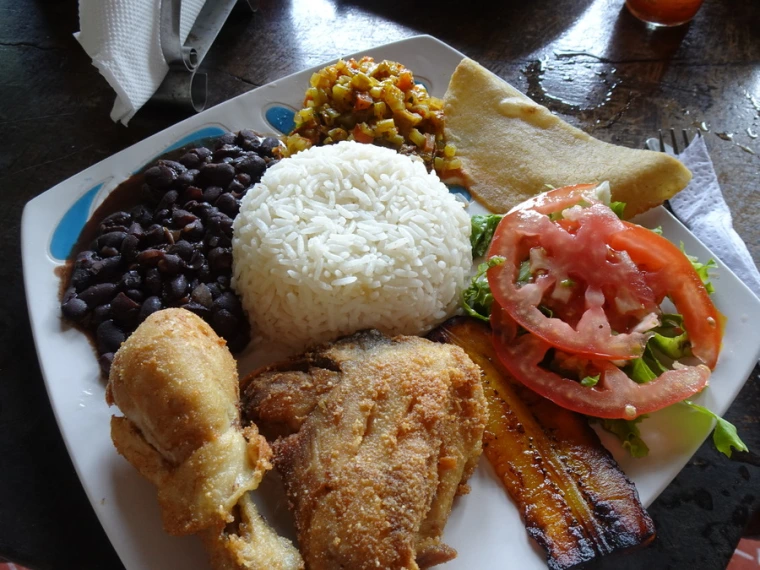
We double-checked the location of the bus stop with the owner (who complimented my Spanish and asked where I’d learnt it, to which I replied Duolingo), and made our way across the road with plenty of time to spare before our onward bus. If you’re relying on public transport in Costa Rica, be prepared to spend more time than timetables might suggest waiting for a bus; our 14.30 bus didn’t materialise until 15.30. On the upside, we did enjoy a bag of rambutans while we waited.
We had four nights in Puerto Jiménez, two either side of our hike in Corcovado National Park, which was plenty of time to explore some of what the area had to offer. Here are some of the highlights.
La Perica Sloth Garden
This was a gem of a find from Laurence, and if you want to see these adorable furballs whilst in Costa Rica this is the place to go. La Perica Sloth Garden is a family-run business, about half an hour’s drive from Puerto Jiménez; if, like us, you don’t have a car, you can contact them to arrange transport.
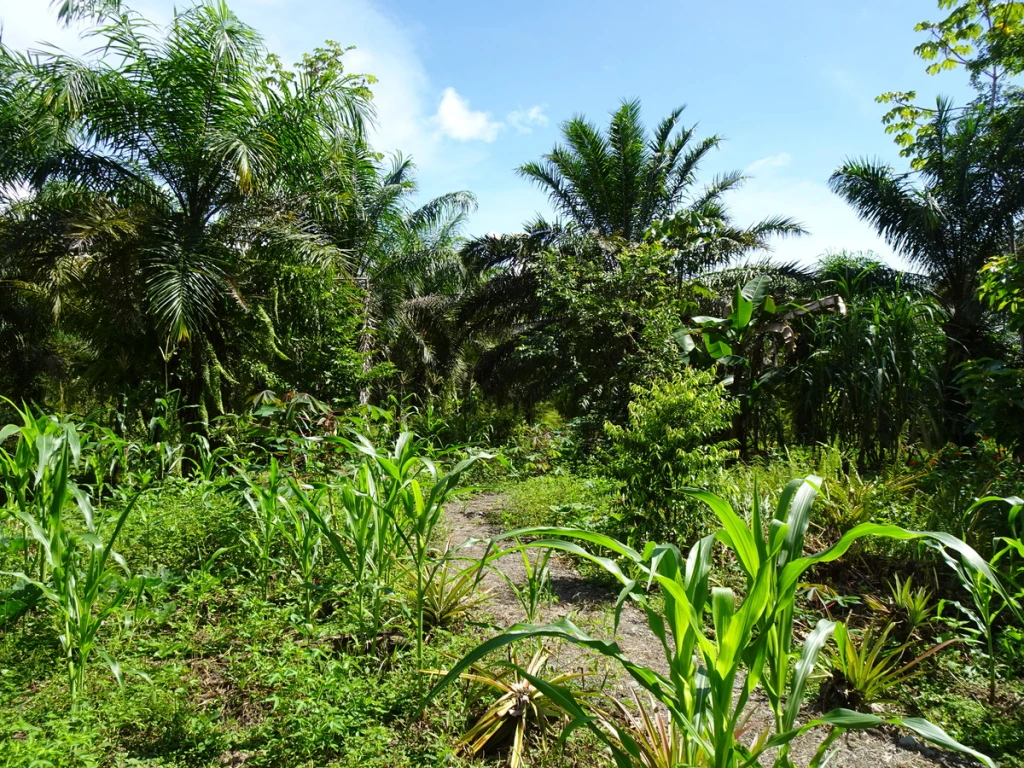
Back in the 1980s, Antonio moved from a rural area near San José to La Palma, bringing his family with him. Years later, when his wife was unable to walk so far, they realised lots of sloths were living in the treetops in a patch of land they hadn’t farmed – and voilà, La Perica Sloth Garden was born.
Our guide, along with Antonio’s grandson, provided lots of information on the distribution of different types of sloth (three-fingered vs. two-fingered) and the plants growing there, which included oregano, mint, pineapple, papaya and guava trees.
We saw half a dozen sloths snoozing in the trees, a few bats, plus birds including a toucan, a trogan, (related to the famous quetzal), king vultures, hummingbirds and more. At the end of our tour, we were treated to a huge platter of empanadas and fresh fruit, washed down with delicious homemade lemonade. We had a brilliant time, and this was one of my highlights of the entire trip.
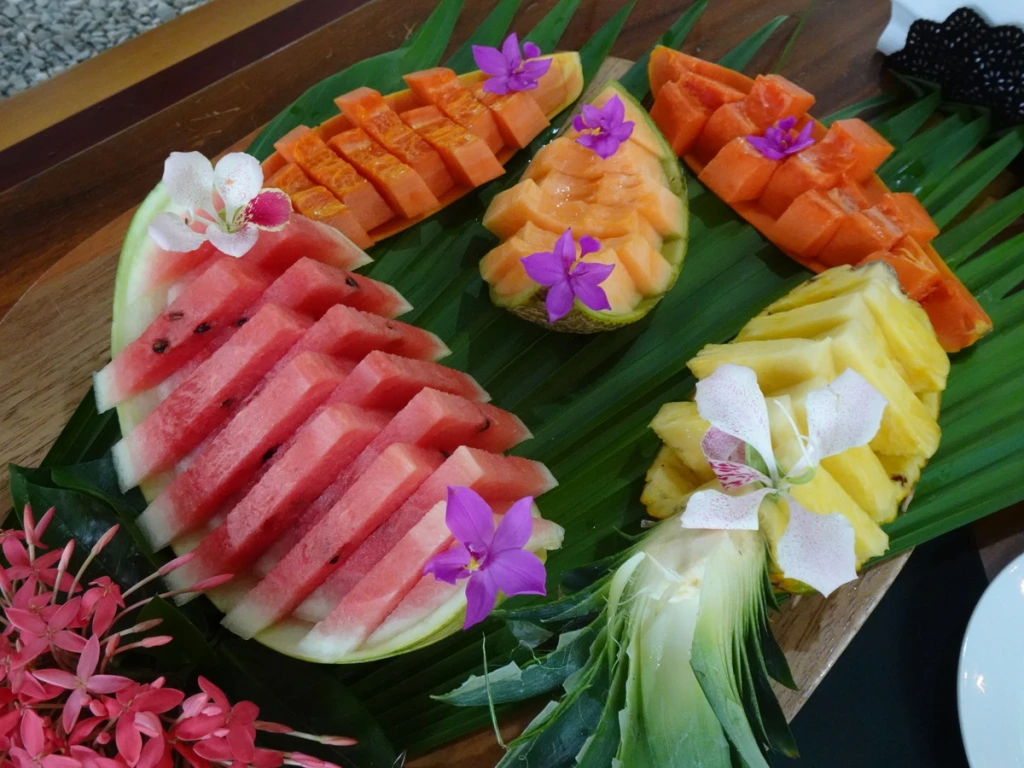
- Cost | $55 USD per person, and worth every cent. A return taxi to La Perica Sloth Garden cost $40 USD (you can pay by card to La Perica Sloth Garden, and they will pay the driver in cash).
Lagoons
Our paper map from Cabinas Jiménez had a few small lagoons marked on it, so we decided to investigate them. The path beside the lagoon was a wee bit overgrown, but there were nice views across to the nesting birds and their fluffy chicks (apologies, I haven’t a clue what species of bird they are). We also spotted a lizard (below) and, cruising through the water beneath the birds, a caiman.
On our way back, we stopped for a cup of shaved ice – I had strawberry, while Laurence opted for coconut.
Osa Wild Night Tour
This was our first night tour of the trip, and it was brilliant – a combination of a patient, knowledgeable guide, a small group, and seeing lots of nocturnal creatures. I don’t have many photos, but we saw frogs (the cutest being the red-eyed tree frog, and the most impressive being the bull frog which was almost the size of a small guinea pig), a racoon, sloths and various spiders (apparently the banana spider has a nasty bite when fully grown).
Playa Platanares
After breakfast at Café Monka, we borrowed bikes from Cabinas Jiménez. (Not all of the bikes had brakes, so it’s worth taking a little time to choose one you’re confident riding.) Playa Platanares is a straightforward 5km(ish) ride down the coast from Puerto Jiménez. It was stonking hot that day, so we made the most of every sliver of shade along the way!
It’s true that you’ll hear the howler monkeys before you see them (and you may well not see them at all – it really is down to luck). Laurence spotted not one but two troops above us in the trees on our ride over, so needless to say we stopped for a while to watch them and take oodles of photos.
Just as the guidebook had said, Playa Platanares was virtually deserted: it was just us, a couple with a parasol and a small group further down the beach.
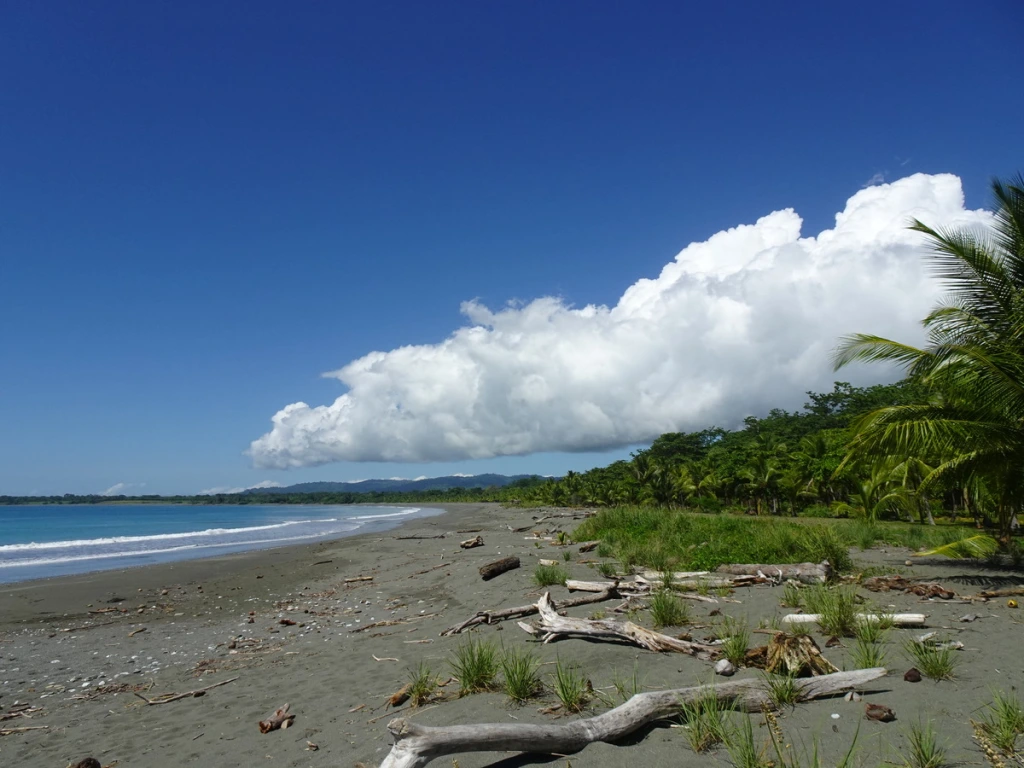
We found a spot in the shade to leave our things, and then went for a splash in the sea. (Signs warn visitors of riptides, so we stayed close to the shore.) The water was so lovely and warm – if only it were like that here, and I could be tempted into venturing into the sea more often!
En route back to Puerto Jiménez, we stopped to let an iguana cross the road. I guess the nearby resort wasn’t named Iguana Lodge for nothing!
Kayaking in the mangroves
We booked via Osa Wild but this particular trip was actually run by Aventuras Tropicales, which is a half hour walk from Puerto Jiménez. We’d only kayaked once before (on the Isle of Mull) and it was nice to be back out on the water. We learnt about the different types of mangroves (red mangroves are so called due to the colour of their roots, whereas tea mangroves get their name from the shape of their leaves) as we kayaked into the mangroves.
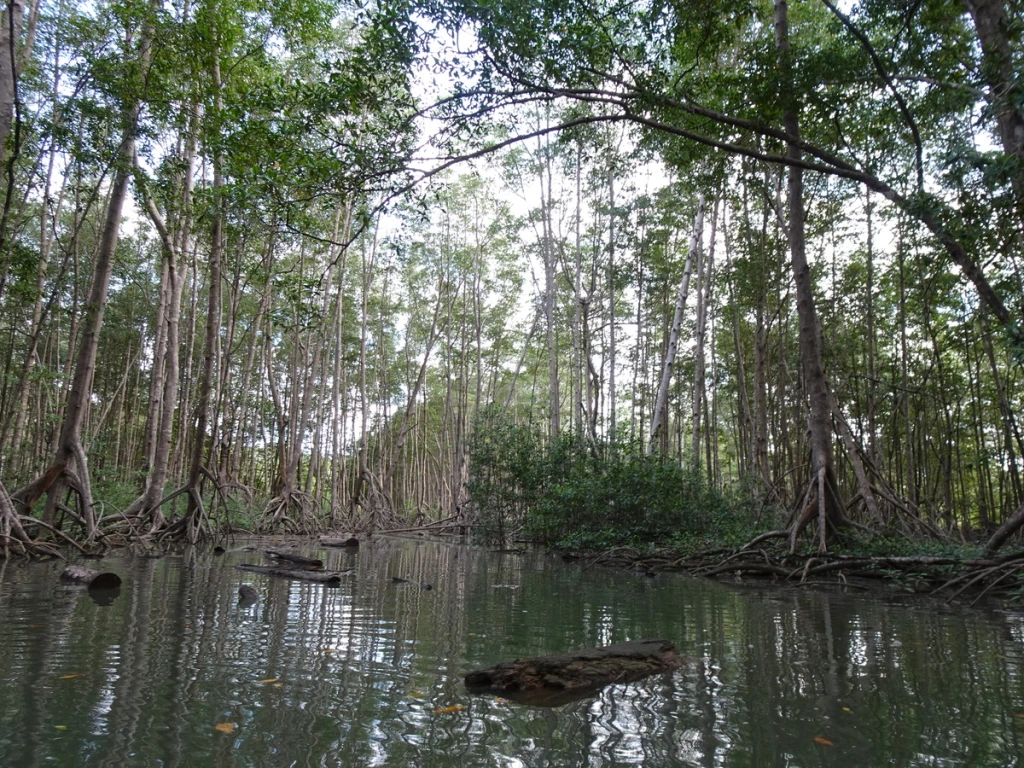
On our way back, we stopped off at Playa Preciosa. Here, our guide Esteban cut fresh pineapple for us (he was horrified to learn that it’s sold in tins in the UK!) and showed us how to open a coconut. We tried coconut water, chunks of coconut flesh and even squeezed some coconut flesh in our hands to make coconut milk.
We then hopped back in our kayaks and paddled out to see the sunset over the bay.
Food and Drink in Puerto Jiménez
Café Monka | We had breakfast here a couple of times, and it was a solid recommendation from our Lonely Planet guidebook: their pancakes are enormous and guaranteed to fill you up, and their yogurt/granola bowls were super tasty.
Soda Johanna | The casado at this unassuming roadside soda really hit the spot: tasty food, and at a fraction of the price of the touristy fare available nearer to our hotel. I also learnt a new word: jugo de maracuyá is passionfruit juice (and it’s delicious).
Hellen’s Chill House | If you want a change from platefuls of casado, this little café on the main street is a great option. Their portions are very generous (read: huge).
Pollo Opi Opi | We stumbled upon this fast-food joint on our way back from kayaking in the mangroves. As there was a steady queue of locals, we decided to give it a go: two portions of chicken (either breast/wing or breast/leg), each with a baked plantain and a spicy dip, plus soft drinks came to 7,000₡ (that’s just under £11).
KNOW BEFORE YOU GO
- Getting there| We caught the 06.30 bus (on a Friday) from San Gerardo de Rivas to San Isidro de El General (aka Perez Zeledón); tickets cost 1,375₡ per person one-way in July 2023. We weren’t dropped back at the central bus station beside the Mercado Municipal de Perez Zeledón, and I don’t have a note of the bus terminal we used to reach Chacarita (it was either Tracopa or Terminal Transportes Blanco, both right by the highway through the city). The bus from Chacarita to Puerto Jiménez stops in front of the south side of the petrol station; it cost 5,000₡ per person one-way in July 2023. Have cash to hand for bus journeys.
- Accommodation | We stayed at Cabinas Jiménez, which was at the top end of town. We paid roughly 144,000₡ (approx. $266/£218) for four nights in July 2023, split across two lots of two nights; if you pay in cash you’ll get a small discount, but they do also accept card payment. We were able to leave some of our luggage with them while hiking in Corcovado National Park which was really helpful, plus you can use their kayaks (check tide times) and bikes free of charge. We actually had a booking at a different hostel for after our Corcovado trip, but ended up cancelling it and booking another couple of nights here as we liked it so much.